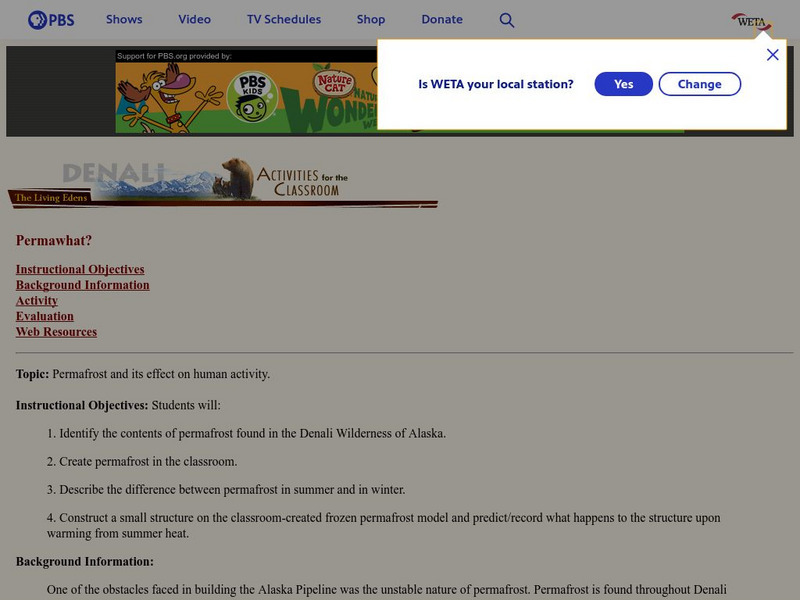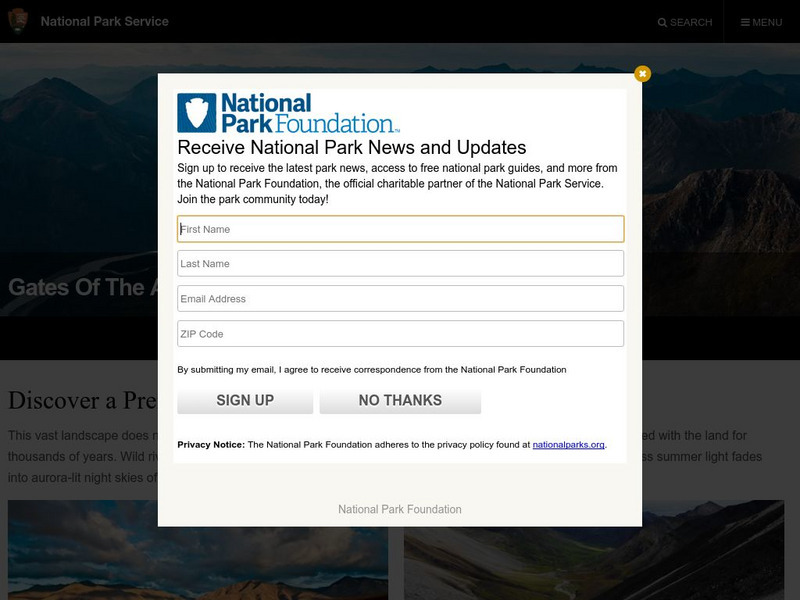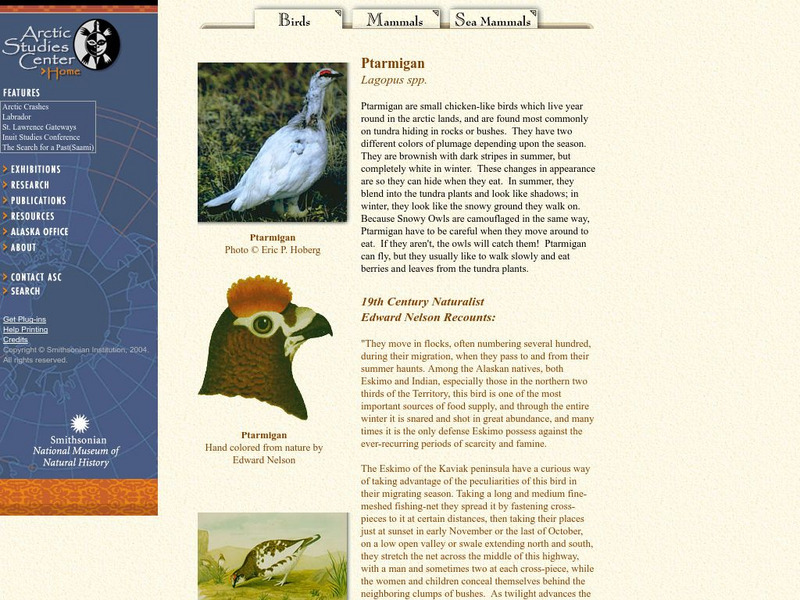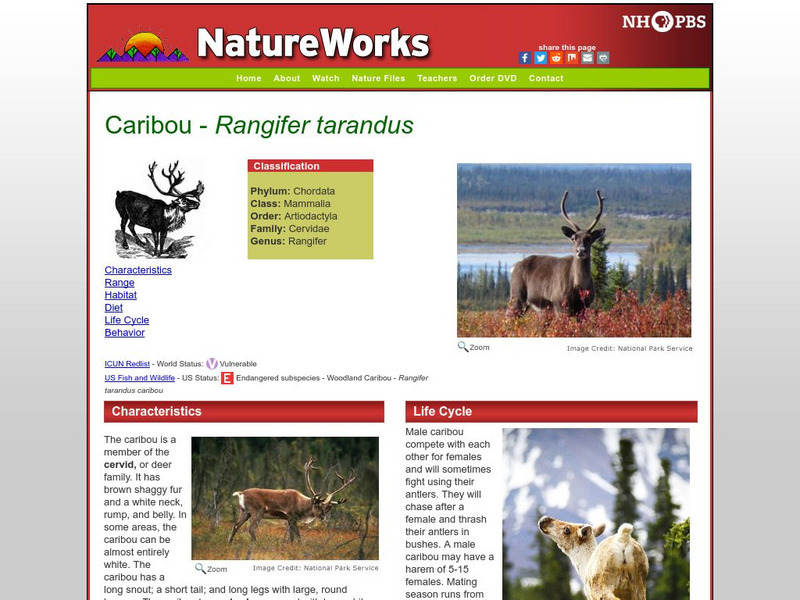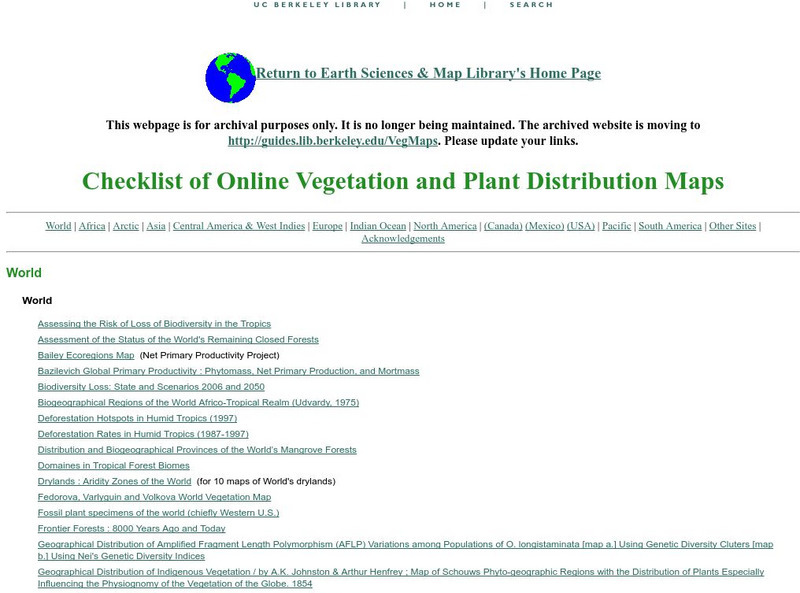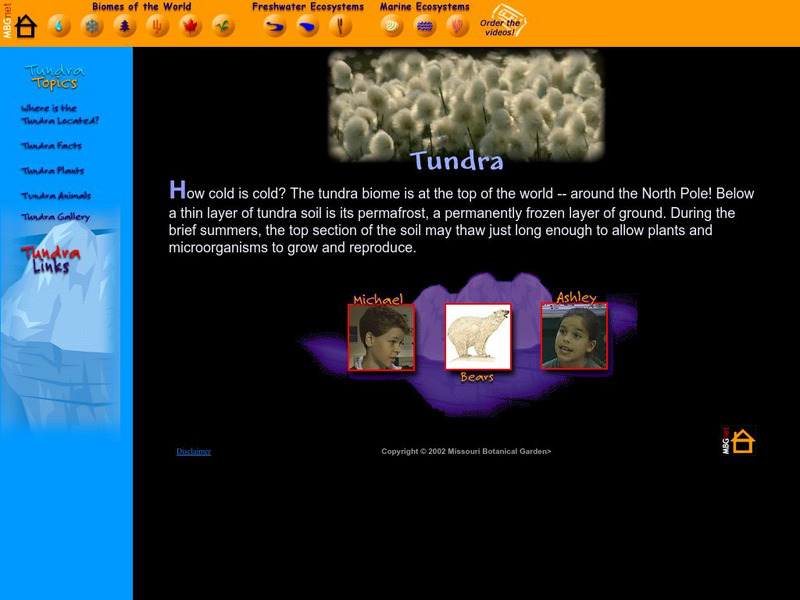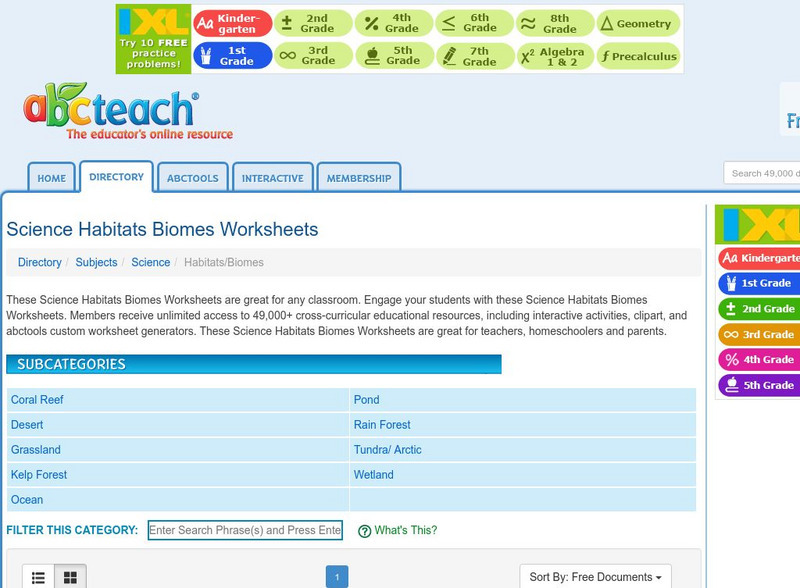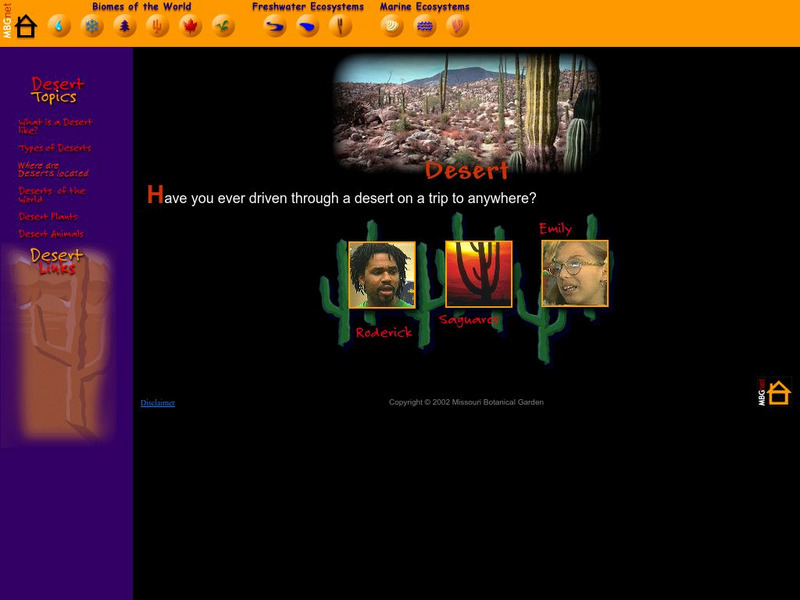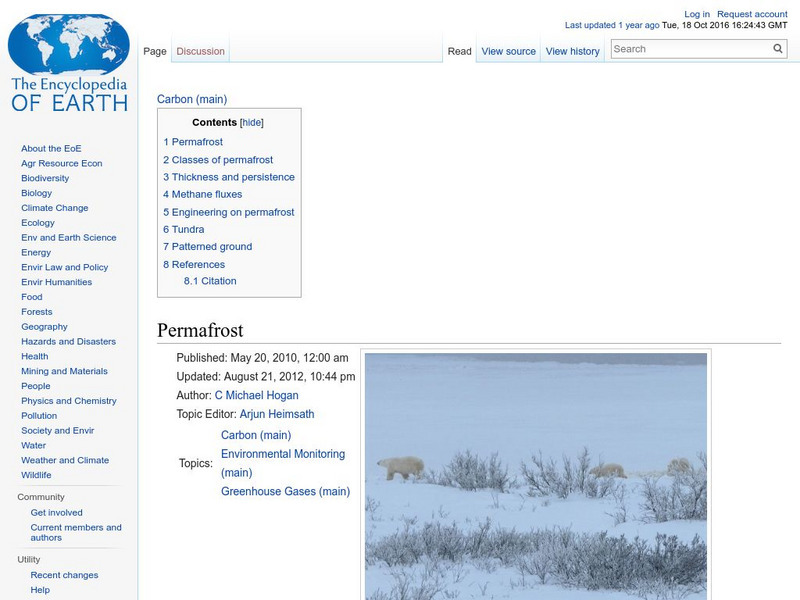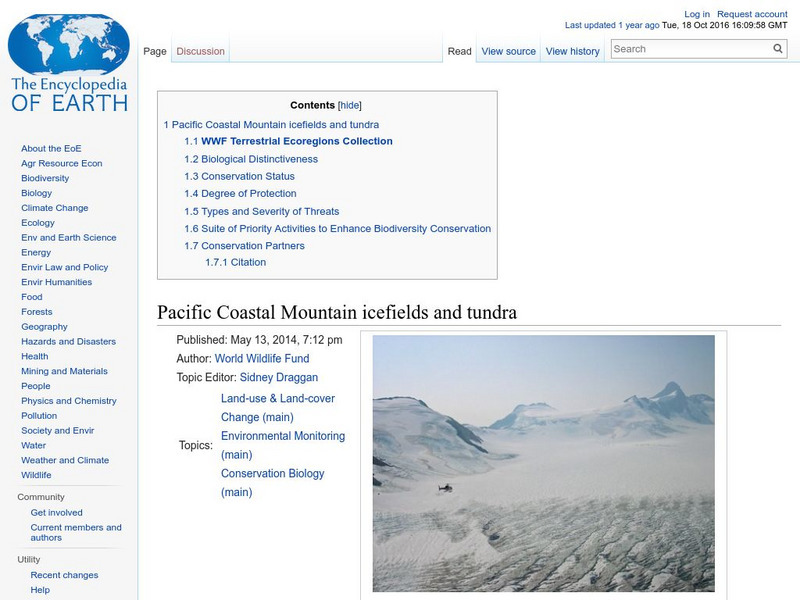University of California
Ucmp: The World's Biomes
This is an introduction to the major biomes on Earth. This page groups biomes into five major types: aquatic, deserts, forests, grasslands, and tundra. Information on climate, animal/plant life, and much more is given for each of type...
University of California
Ucmp: The World's Biomes
The University of California Museum of Paleontology hosts this site devoted to the study of the earth's biomes, which are the world's major communities, classified according to the predominant vegetation and adaptations of organisms to...
PBS
Pbs: Activities for the Classroom: Permawhat?
This is a an online activity on permafrost. The objectives are stated, there is background information, an activity, an evaluation, and additional web resources.
PBS
Pbs: M, M, M (Maps, Maps, Maps)
This is an online activity on Topographic maps with stated objectives, an activity, background information, evaluation, and resources. This site has information on where you can adjust the activity for elementary or secondary age levels.
PBS
Pbs Learning Media: Observe Images of Different Climate Zones
Interact with this world map from McDougal Littell/TERC to highlight different climate zones and see a photograph of each one. Ten climate zones are represented, including tundra, desert, humid subtropical, and others.
The Wild Classroom
The Wild Classroom: Biomes
This excellent resource explores all of the biomes found on planet Earth! A side menu indicates the world's biomes and provides details on each. Colorful interactive maps, video clips, lesson plans, species profiles, and so much more...
Other
Introduction to the Biosphere: Characteristics of the Earth's Terrestrial Biomes
From Chapter 9 of a textbook on physical geography that covers the biosphere. Important vocabulary is highlighted and linked to a glossary. It explains the characteristics of a biome, and describes the features of the eight different...
Curated OER
National Park Service: Gates of the Arctic National Park and Preserve, Alaska
Gates of the Arctic National Park and Preserve offers information about its expansive wilderness. Here you can find park maps and visitor information, as well as information on the park's geology. A "teacher feature" includes educational...
BBC
Bbc Nature: Wildlife: Tundra
Explore the fascinating world of the tundra biome and discover what lives and grows there through videos, pictures, and external links. Listen to the various sounds made in a tundra.
Enchanted Learning
Enchanted Learning: Biomes
Discover the hidden treasures in the different habitats on the earth! The earth is filled with many biomes. Examples of different biomes are listed and include hyperlinks to additional information such as the animals found there.
Smithsonian Institution
National Museum of Natural History: Ptarmigan
This Smithsonian website has a brief, but thorough, article on the Ptarmigan. It also includes pictures and an extensive quote from 19th Century naturalist Edward Nelson.
University of California
Ucmp: The Desert Biome
Learn about the four types of deserts: hot and dry, semiarid, coastal, and cold with this key facts and information. Includes links to other biomes: aquatic, forest, grasslands, and tundra.
PBS
Pbs Learning Media: Biomes
This interactive resource adapted from NASA describes the different temperature, precipitation, and vegetation patterns in seven biomes: coniferous forest, temperate deciduous forest, desert, grassland, rainforest, shrubland, and tundra.
Exploratorium
Exploratorium: Ice Stories: Dispatches From Polar Scientists: Tundra, Permafrost
An article exploring the depths of tundra and permafrost in the Arctic region.
PBS
Nh Pbs: Nature Works: Caribou
The focus of this NatureWorks resource is the Caribou. The content includes a look at this species' characteristics, range, habitat, food, reproduction, and behavior.
University of California
U.c. Berkeley Libraries: Plant Distribution Maps
This resource provides a list of online maps of world vegetation such as biomes, forests and plants.
Missouri Botanical Garden
Missouri Botanical Garden: Tundra
At this site from the Missouri Botanical Garden you will find information on the tundra. What is the tundra? Where is it located? What is the climate of the tundra? What animals live in the tundra? What plants live in the tundra? Click...
Missouri Botanical Garden
Missouri Botanical Garden: Tundra Animals
Explore this comprehensive resource on the birds and mammals of the tundra. This resource features information such as diet, class, order, size, habitat, conservation range and the like.
abcteach
Abcteach: Habitats and Biomes
[Free Registration/Login Required] Find a variety of activities for children to do as they learn to identify varying habitats and biomes. Included are links to an even more extensive list of resources under coral reef, desert, grassland,...
Geographypods
Geographypods: Introduction to Ecosystems and Biomes
Using worksheets, images, videos, and internet resources, students will be able to learn the names and locations of the seven major global biomes in the correct order from polar regions to the equator.
Geographypods
Geographypods: Weather and Climate Graphing It!
Explores the difference between weather and climate and how they are measured. Students will complete activities and construct a climate graph from raw data. They will also learn about the physical structure of the rainforest, its...
Missouri Botanical Garden
Missouri Botanical Garden: Plants of the Desert
The Evergreen Project reveals such desert plants as the dragon tree, the saguaro cactus, the prickly pear, the desert spoon, the aloe plant, and the like. Illustrated.
Encyclopedia of Earth
Encyclopedia of Earth: Carbon: Permafrost
Explains what permafrost is, the different classes, features of deep permafrost, what happens when it melts, difficulties with constructing anything on top of it, characteristics of tundra, and patterns left in the tundra by the...
Encyclopedia of Earth
Encyclopedia of Earth: Pacific Coastal Mountain Icefields and Tundra
Describes the geography of this ecoregion, its biodiversity, its excellent conservation status, the parks and wilderness areas within its boundaries, potential threats, and organizations working to ensure its protection. (Updated August...




